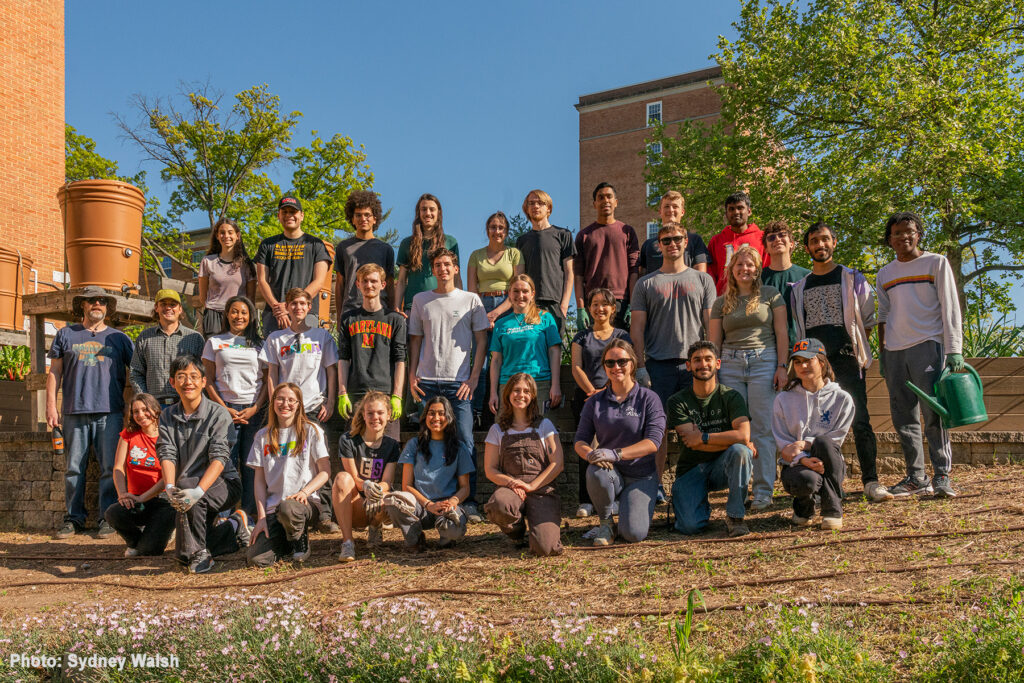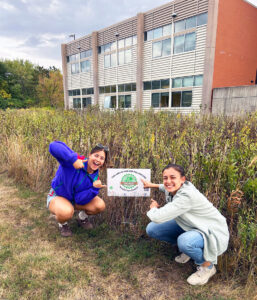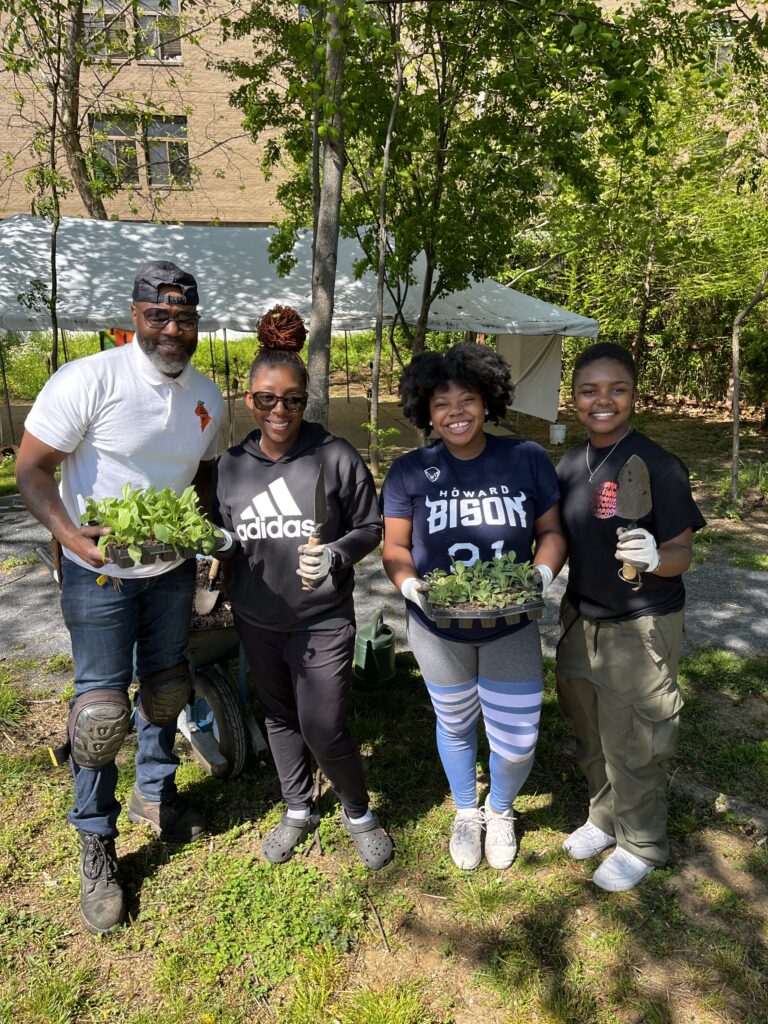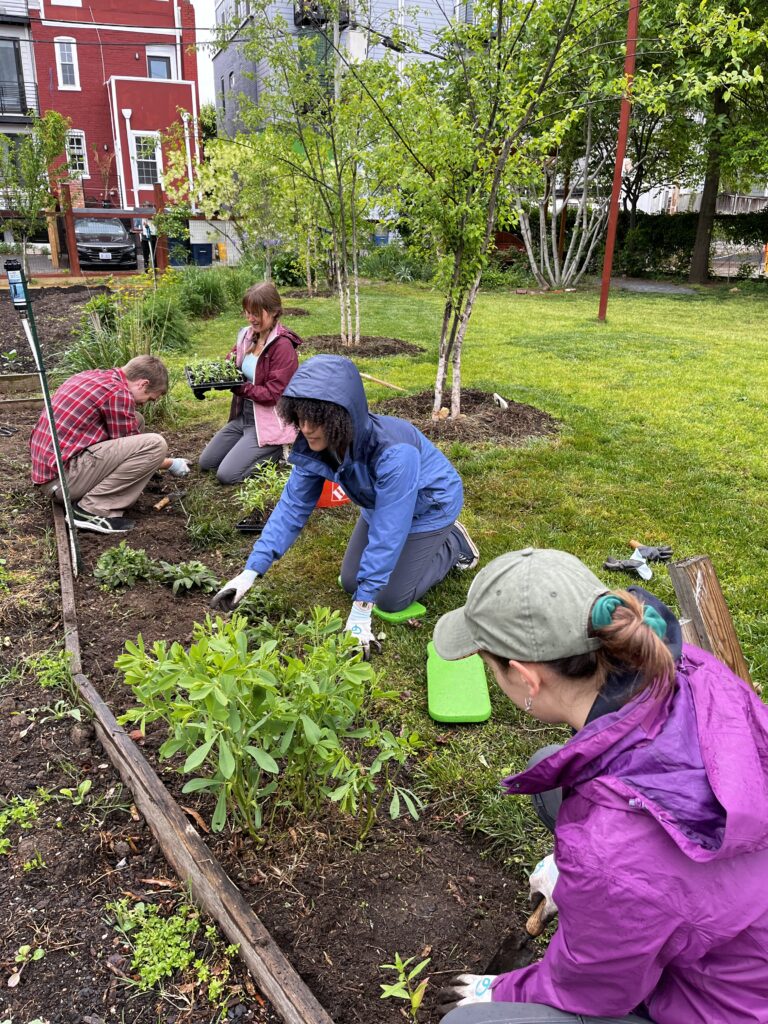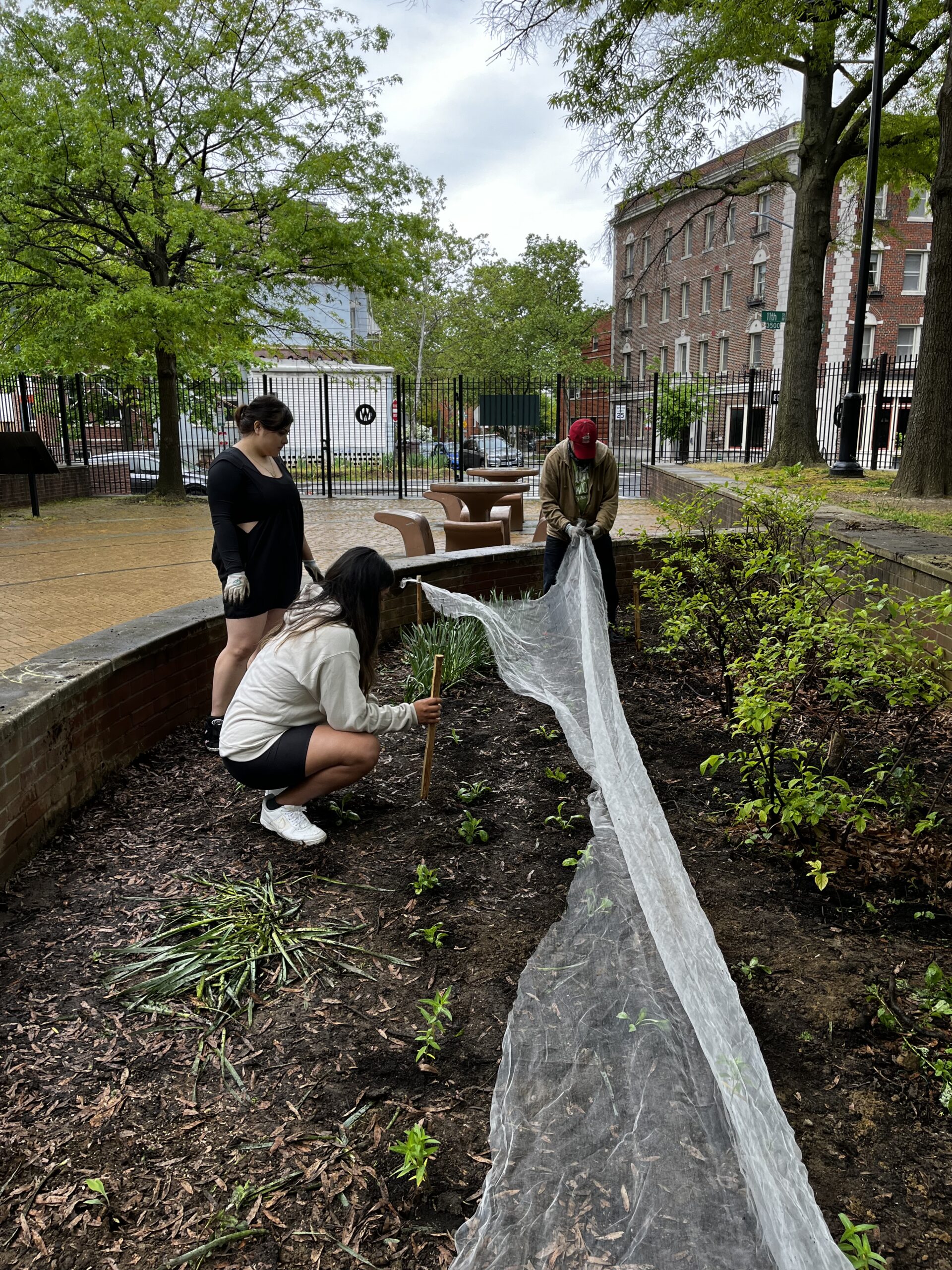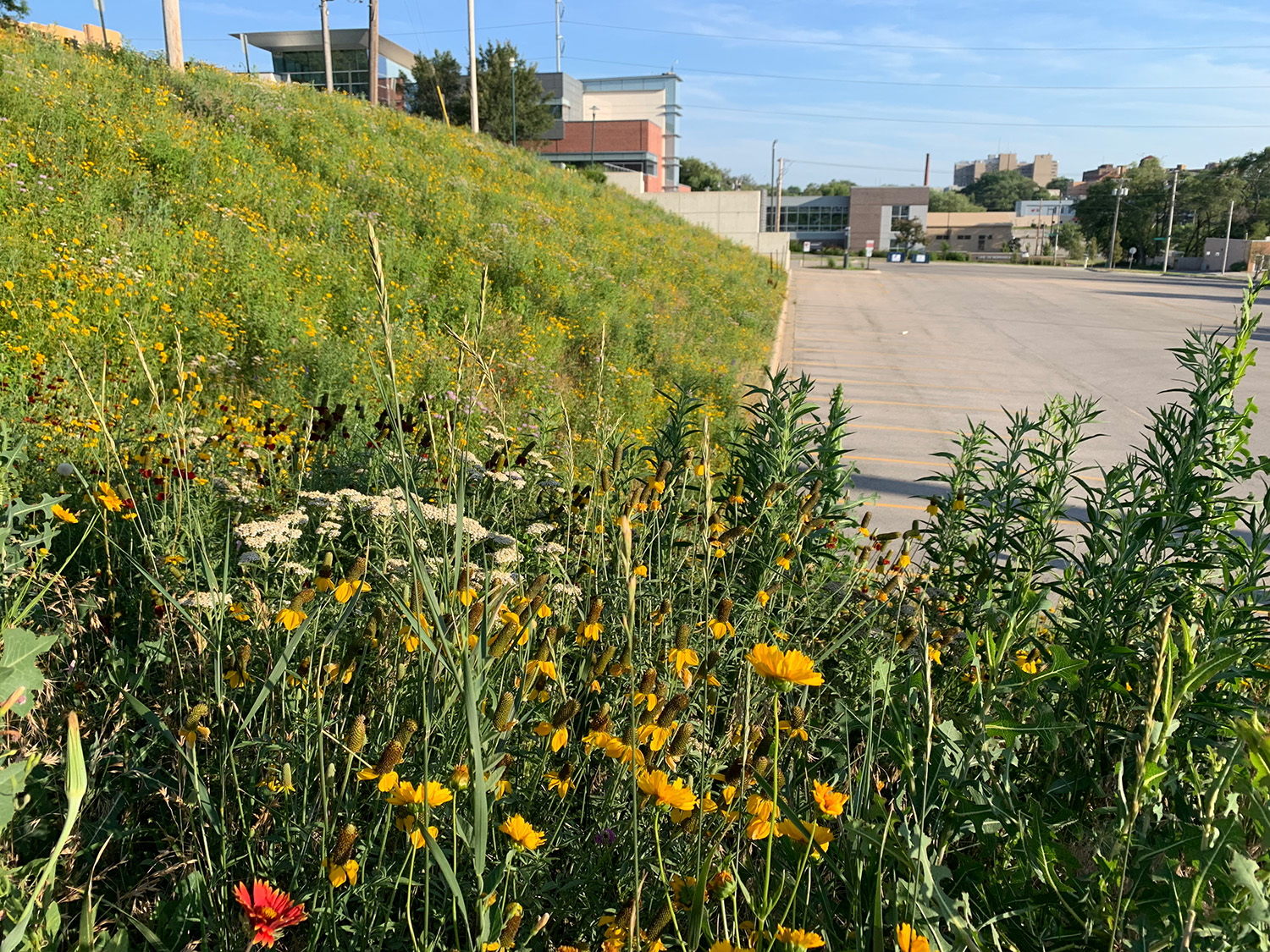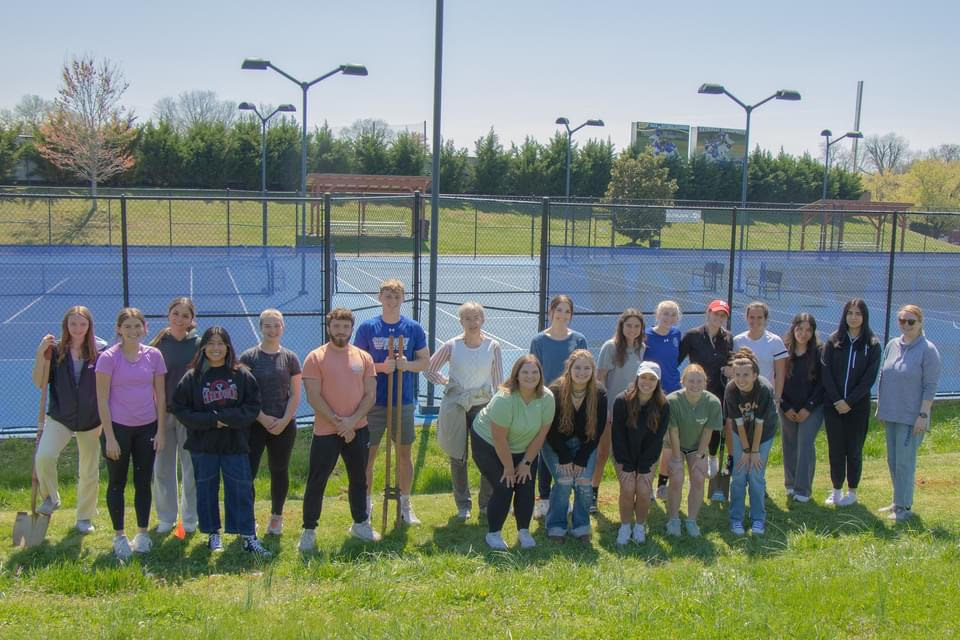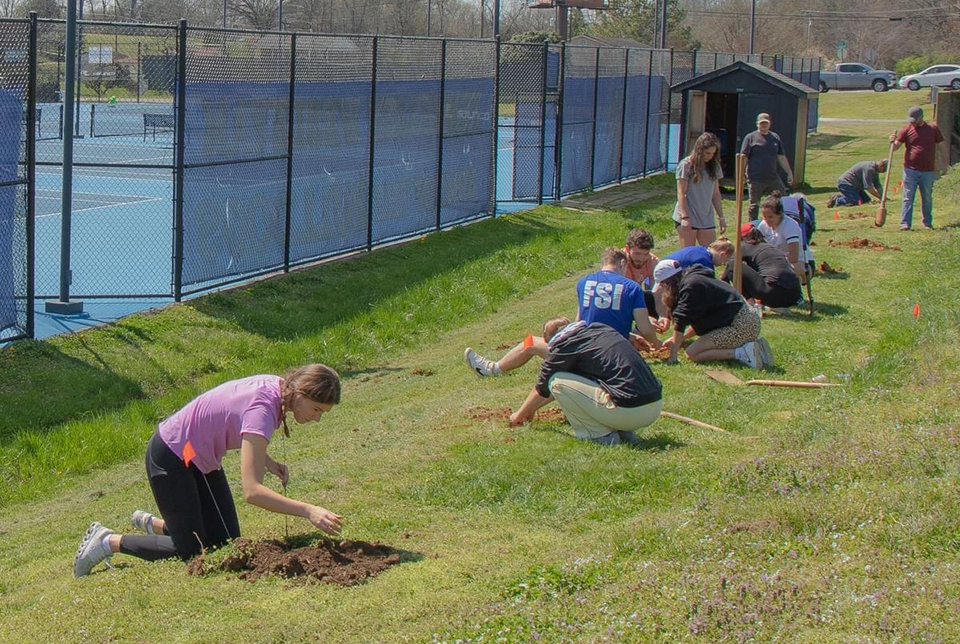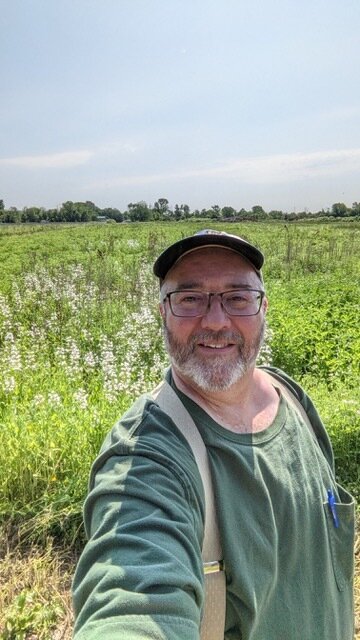Universities Leading the Way with Healthier Landscapes
By Grant Jensen and Re:wild Your Campus
Est. Read Time: 7 minutes
Learn how campuses are converting to native ecosystems and organic land care, and how you can get involved with your campus or alma mater.
Find these universities on the Homegrown National Park Biodiversity Map!
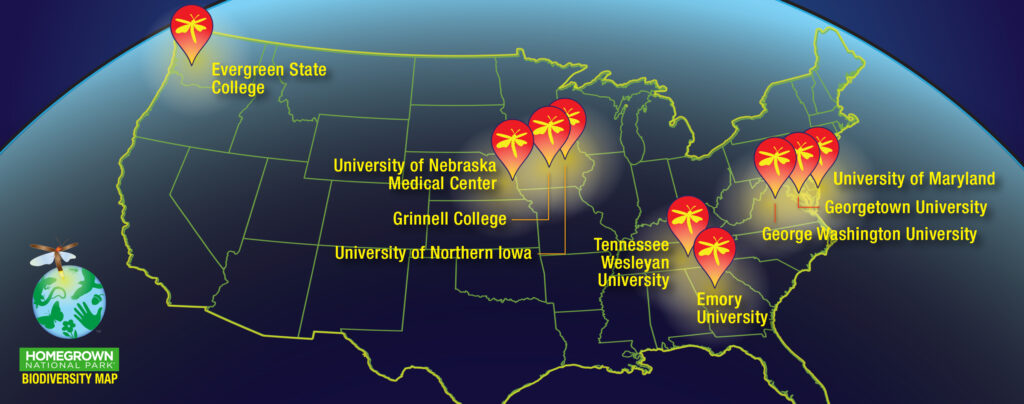
Native plants are more than a trend in university landscaping; they are essential for ecological restoration. These plants are the ecological foundation of our local habitats, perfectly adapted to our climate and soil, making them the ultimate support system for local wildlife. By planting native, universities are turning their campuses into biodiversity hotspots, providing essential resources for pollinators and birds, reducing water usage, and slashing maintenance costs.
The Green Campus Movement
Across the country, forward-thinking universities are redefining what it means to be a "green campus." They're not just recycling more or cutting down on energy use; they're reshaping their landscapes to support local ecosystems. For example, the University of Wisconsin-Madison's Lakeshore Nature Preserve is actively restoring over 300 acres with native plants. Or the University of Texas at Austin, where landscapes are designed not only for beauty and utility but also for conservation purposes.
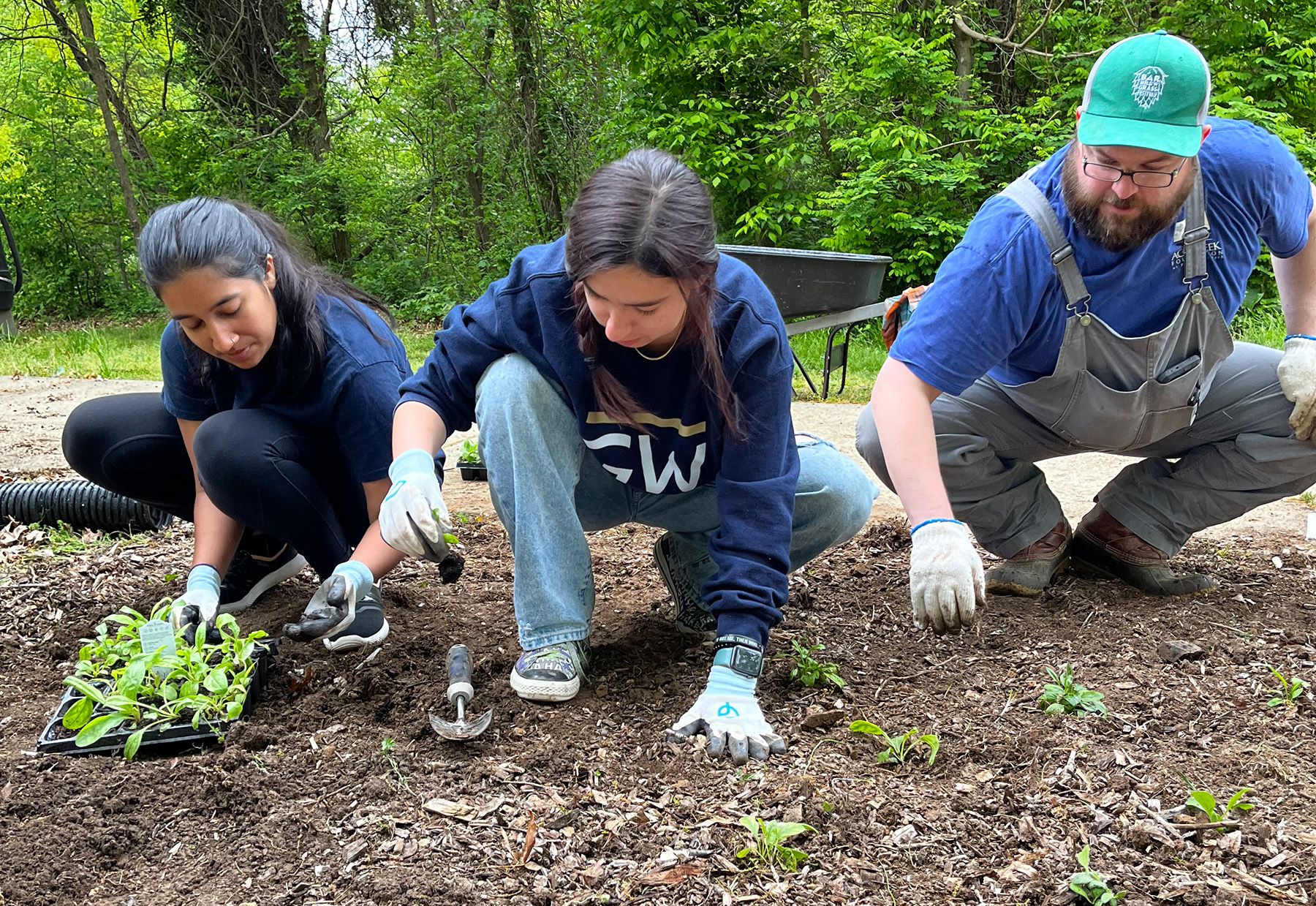
The Benefits Are Blossoming
The perks of planting native go beyond beautification. These green spaces serve as outdoor classrooms and research sites where students of all majors can engage with real-world issues in conservation, ecology, and sustainability. They also act as carbon sinks, pulling in carbon dioxide and breathing out oxygen—a natural air purifier for those long walks to class.
And let's not forget mental health! Numerous studies have shown that spending time in nature reduces stress and improves mental well-being. These native gardens not only support bees but also provide a peaceful retreat during stressful times, such as finals week.
How Universities are Planting Roots
The movement is growing, with many institutions incorporating native plant gardens and landscapes right at the heart of campus. Students and faculty are often involved from the ground up, from planning gardens to planting and maintenance, fostering a sense of community and stewardship.
For example, Evergreen State College in Washington uses its entire campus as a living-learning space, featuring native plantings that require minimal irrigation and no chemical fertilizers. They’ve turned sustainability into a campus culture, not just a policy.
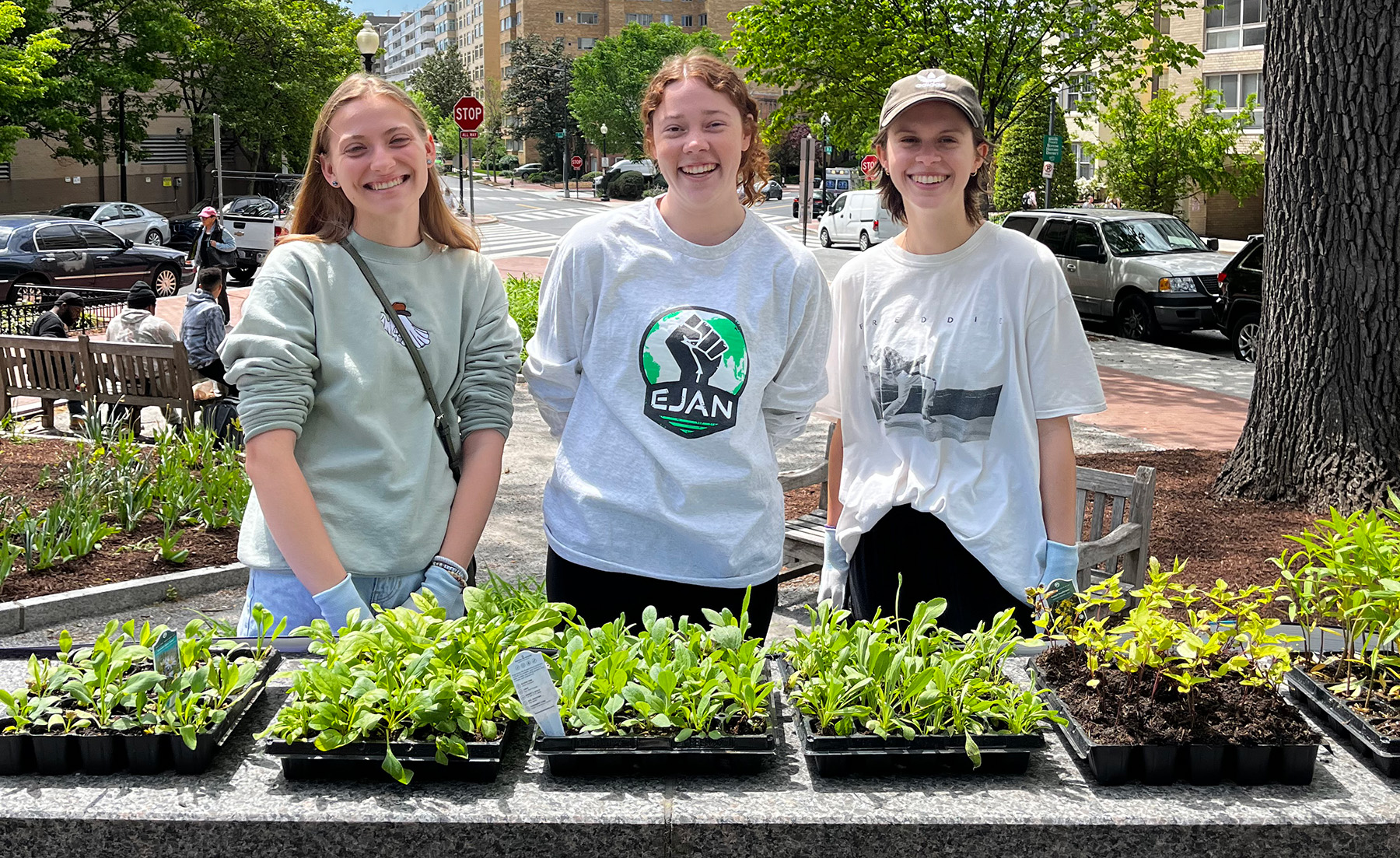
Challenges on the Path
Of course, it’s not all daisies and sunshine. Transitioning to native plant landscapes can be challenging. It requires re-education about gardening practices, battling invasive species, and sometimes, facing resistance from those who prefer the traditional, manicured (and high-maintenance) campus lawns. But the long-term ecological and educational benefits far outweigh these initial hurdles.
Re:wild Your Campus
Re:wild Your Campus is pioneering a critical shift in how university campuses across the nation manage their landscapes. Driven by a mission to eliminate the widespread use of toxic, synthetic pesticides, this initiative champions the transition towards organic land care and the rewilding of campus spaces.
The program offers a comprehensive approach to campuses eager to transition from traditional, pesticide-dependent lawns to thriving ecosystems of native plants that enhance biodiversity and support pollinator health. For areas where grass remains central to campus aesthetics, Re:wild Your Campus provides vital education on organic land care methods.
One standout example is the University of Northern Iowa (UNI), which boasts extensive native prairie grasslands. Unlike conventional turf, these prairies require minimal upkeep, managed through rotational prescribed burning and selective mowing. UNI also involves students in hands-on conservation efforts, organizing volunteer days for the manual removal of invasive species.
The ecological benefits of these prairie areas are vast, offering crucial habitats for local wildlife, aiding in nutrient recycling, enhancing water infiltration, and safeguarding against erosion. Remarkably, these grasslands also support endangered species such as the Rusty Patched Bumblebee, observed by students last fall.
Recognizing the efforts of institutions like UNI, Re:wild Your Campus has introduced the Green Grounds Certification. This accolade rewards schools that adopt regenerative landcare practices that boost biodiversity, conserve water, improve soil health, and elevate campus sustainability.
The movement is gaining momentum nationwide, with schools like Grinnell College and Emory University also embracing rewilding and organic care initiatives. These projects not only transform aesthetics but also create healthier environments for campus communities and local wildlife.
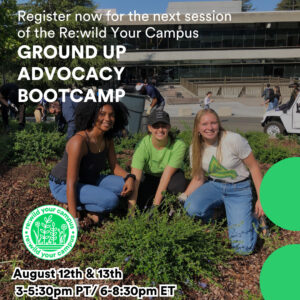 Ultimately, Re:wild Your Campus underscores the necessity of combining rewilding efforts with organic land care. Many campuses have designated pollinator habitats that risk being compromised by adjacent chemically treated lawns. By adopting holistic, organic practices, campuses can truly protect and nurture the biodiversity they aim to support.
Ultimately, Re:wild Your Campus underscores the necessity of combining rewilding efforts with organic land care. Many campuses have designated pollinator habitats that risk being compromised by adjacent chemically treated lawns. By adopting holistic, organic practices, campuses can truly protect and nurture the biodiversity they aim to support.
The initiative also empowers students through the Ground Up Advocacy Bootcamp and offers mentorship, resources, and professional connections to encourage a new generation of environmental leaders. This comprehensive support system ensures that campuses not only attract but also safely sustain pollinator populations and other wildlife. Register now for the next Ground Up Advocacy Bootcamp, which will be held August 12-13, 2024.

WILD VISIONS
HABITAT CREATION CHALLENGE
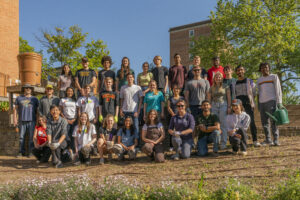
Garden for Wildlife launched its first annual Wild Visions Habitat Creation Challenge last spring, challenging university students in the Washington, D.C., area to design and plant native gardens in their communities. Thirteen student groups from seven different universities answered the call and spent the semester developing their garden concepts and designs with community partners.
Gardens were planted during Earth Week, resulting in a total of 5,600 square feet of new wildlife habitat across the DC metro area.
Community care, public health, environmental justice, urban agriculture enhancement, indigenous visibility, avian and wildlife conservation were some of the various motivators behind student participation - and the gardens reflect this diversity in perspective and purpose. Tapping into the immense power and creativity of the university student population, Wild Visions has created high-quality habitat in our city and eco-agency in our students.
UNIVERSITY OF NEBRASKA MEDICAL CENTER
At the University of Nebraska Medical Center (UNMC), a transformation is unfolding on what were once just parking lots. Thanks to a grant from the Nebraska Environmental Trust, 1.7 acres have been converted into vibrant ecosystems of native plants. This initiative not only beautifies the campus but also promotes a deeper ecological purpose.
The project started in fall 2020 with plants chosen to fit the urban landscape and support biodiversity. They grow 2- to 4-feet tall, ideal for both safety and aesthetic purposes in busy areas, and include a diverse mix of more than 50 species of forbs, grasses and sedges. These included perennials, annuals and biennials, selected to mimic the native prairies of eastern Nebraska but adapted for urban settings. This selection supports a range of pollinators and birds by providing a structured habitat and continuous blooms from April to October.
To help bring this vision to life, UNMC leveraged volunteer hours for the installation from the LiveGreen Ambassador group on campus, an organization dedicated to sustainability.
The project aligns with the university’s sustainability goals and educates and engages the community in environmental stewardship. Transforming these spaces into ecological sanctuaries highlights the potential of integrating biodiversity into urban planning.
Tennessee Wesleyan University
Tennessee Wesleyan University (TWU) recently celebrated Tennessee Tree Day by planting 30 native trees, including flowering dogwood and eastern redbud saplings. These join a diverse collection of native species on the campus.
The campus and local community have responded enthusiastically. Students, particularly those in the Natural Sciences, participated in the planting, sparking greater interest in the native flora. For years, Athens residents have visited the campus to enjoy the native vegetation, especially during Arbor Day celebrations held in partnership with the City of Athens, a recognized Tree City USA.
TWU has proudly held Tree Campus USA status for a decade, an Arbor Day Foundation program that honors colleges for effective urban forest management and community engagement. This recognition aligns with the university’s dedication to maintaining a tree advisory committee, implementing a tree-care plan, and conducting service-learning projects.
Looking ahead, TWU plans to expand its native plantings. Dr. Mali Hubert and the maintenance team are already planning for Tennessee Tree Day 2025, aiming to enhance the campus ecosystem further.
So, whether you’re a student, faculty, alumni, or just someone who loves to see nature flourish in urban spaces, get involved. Let’s turn our universities into thriving ecosystems that teach us not just through books, but through the roots and leaves of the plants that sustain us all.
How to Contribute
Feeling inspired to get involved with your university or alma mater? Want to see your university transform into a wildlife friendly habitat? Here’s how you can help make it happen:
Volunteer
- Get your hands dirty! Many universities have plantings and gardening days. It’s a great way to meet like-minded individuals who share your passion for nature and sustainability.
Advocate
- Attend the next Re:wild Your Campus’ Ground Up Advocacy Bootcamp (next session is August 12-13, 2024) to learn more about making real, lasting change on your campus.
- Use the email template below to let your campus or alma mater know that you support healthier landscape practices.
Join the Homegrown National Park Biodiversity Map
Already at a university that plants native? Make sure your school gets the recognition it deserves by adding it to the Homegrown National Park Biodiversity Map. This can inspire other institutions and create a ripple effect of change.
EMAIL TO YOUR UNIVERSITY
Subject: Support for Healthier Landscapes at [University Name]
Hello [Recipient Name],
As [a/an Student/Alum], I am excited about the prospect of [University Name] embracing healthier landscape initiatives on campus. I recently learned about universities transforming spaces with native ecosystems and organic land care, enhancing both beauty and biodiversity, and I believe we could greatly benefit from similar projects.
Here are three key reasons why I support native plantings at [University Name]:
- Biodiversity: By supporting native species and eliminating synthetic pesticides, our campus can become a sanctuary for local wildlife, enriching our biodiversity and providing ecological benefits.
- Environmental Impact: Native plants are adapted to our local environment, requiring less water and fewer resources, which helps reduce the campus's environmental footprint.
- Educational Value: Such initiatives offer students from various disciplines invaluable hands-on learning opportunities about sustainability and conservation.
I encourage the university to get involved with Homegrown National Park and Re:wild Your Campus to learn more about planting native and organic land care.
This could not only enhance our campus but also position [University Name] as a leader in ecological stewardship.
Best regards,
[Your Name]
[Your Graduation Year if applicable]
[Your Email Address]
Thank you to the following for their help in putting this story together:
- Re:wild Your Campus: Sheina Crystal, Mackenzie Feldman
- University of Nebraska Medical Center: Jerrod Bley, Benjamin Vogt of Monarch Gardens LLC
- Tennessee Wesleyan University: Dr. Mali Hubert

